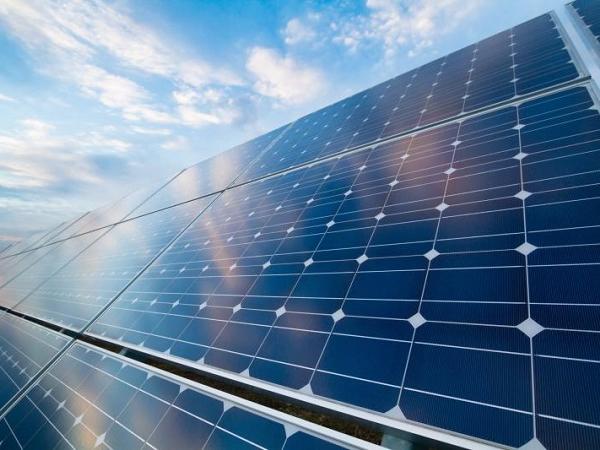However, making an efficient photovoltaic module is a multi-stage process involving an extended solar supply chain, where ultra-clear tempered glass is among the key components. What does it take to process solar glass to become part of a competitive, top-class photovoltaic module?
Falling costs for solar power means new opportunities
In the opening of SolarPower Europe’s Global Market Outlook report on solar power from 2021–2025, solar power is rising to unpredicted highs: “Nobody could have predicted a year ago that solar would manage so smoothly through a devastating global pandemic…global demand for solar did not shrink at all. Instead, surprising us yet again, solar reached a new annual record of 18% growth, with 138 GW installed in 2020.” By the end of 2020, the global cumulative solar capacity was 773.2 GW [1].
Several drivers are adding to the success of solar. Solar power can be used in very versatile applications, ranging from small greenhouses to large utility-scale plants. Furthermore, a solar power plant can be planned and built quicker than any other [1].
Additionally, various countries, such as the top 10 solar leader China, have longer term government policies in place to boost renewable consumption.
Adding to this momentum, the cost of energy generated from utility-scale solar photovoltaics is now on the level of that generated from coal [2], making it an economically sensible choice.
The price competitiveness of solar is a result of cost optimization in its production process and has been called the PV learning curve – as global cumulative photovoltaic capacity doubles, the price of modules decreases by about 20–25% [3]. This cost optimization stretches back to even cover the technology needed for solar power module production – including the machinery used to process solar glass. In each module, the role of the frontside glass is essential. It enables light transmittance while shielding the solar cells from harm and provides mechanical stability.
Thinner, larger – more solar glass
While the end market is experiencing an uptick in demand, the supply chain is being tasked to reduce costs with better overall equipment and thinner materials [3].
The supply chain must also grapple with other changes due to developments in PV technology. Larger cell formats are increasing the module size, and with that, the size of the frontside glass [3, p. 33]. This has led solar glass processors in increasing numbers to move from a 1.2 m to a 1.35 m width in their production, which necessitates a machinery fleet renewal to handle the larger glass sheets.
Another development is in the proliferation of bifacial modules, which means PV modules that allow power generation from both the front and back of the module, adding power gains of between 5–30% [1]. The increasing popularity of bifacial modules even led to a shortage of solar glass in 2020, which was quickly rectified by Chinese manufacturers expanding capacity [1]. Bifacial cells are expected to grow from a market share of 30% in 2020 to over 60% in 2025 [3].
According to our market intelligence, changes in glass sizes are also creating new opportunities for machinery providers to the solar glass processing industry.
The solar market is still mainly using a 3.2 mm thickness for frontside glass, but requirements for 2.5 mm and even thinner are growing. While this reduction in material volume has a positive effect on the solar industry in the form of lower material costs, this creates new challenges when processing the glass to achieve the required module mechanical stability with thinner glass.
This is driving new investments in machinery to produce thinner glass, larger panel widths – and greater capacity.
What we’re seeing in the market today is that most major manufacturers of solar glass are starting to rapidly expand their production capacity. The main requirements for new machinery investments have become high productivity, high rate of top-quality final product and quick return of investment.
Reducing carbon, increasing competitiveness
When glass gets thinner and larger, the importance of accurate heating increases. This is where new technology such as Glaston’s CHF Solar, developed specifically to meet the rapidly evolving needs of solar glass processors, really provides value.
As with all its tempering furnaces, CHF Solar uses the company’s unique convection technology to allow glass processors to heat glass with greater control and accuracy – while reducing energy costs considerably. The reduced energy use also decreases the glass’ embedded carbon, making the solar modules assembled with the glass truly power society into a green future.
What’s also important in the solar glass processing market is that the service does not stop after the machine delivery. The service teams need to be there to support you throughout the entire lifetime of your processing equipment.
In addition, the latest technology upgrades help you keep pace with the evolving and lucrative solar glass processing market – and stay competitive in the long run.
***
[1] SolarPower Europe (20.7.2021) Global Market Outlook for Solar Power 2021-2025, https://www.solarpowereurope.org/global-market-outlook-2021-2025/
[2] Lazard (19.10.2020) Levelized Cost of Energy, Levelized Cost of Storage, and Levelized Cost of Hydrogen, https://www.lazard.com/perspective/lcoe2020
[3] ITRPV (April 2021) International Technology Roadmap for Photovoltaic (ITRPV) 2020 Results, https://itrpv.vdma.org/download























